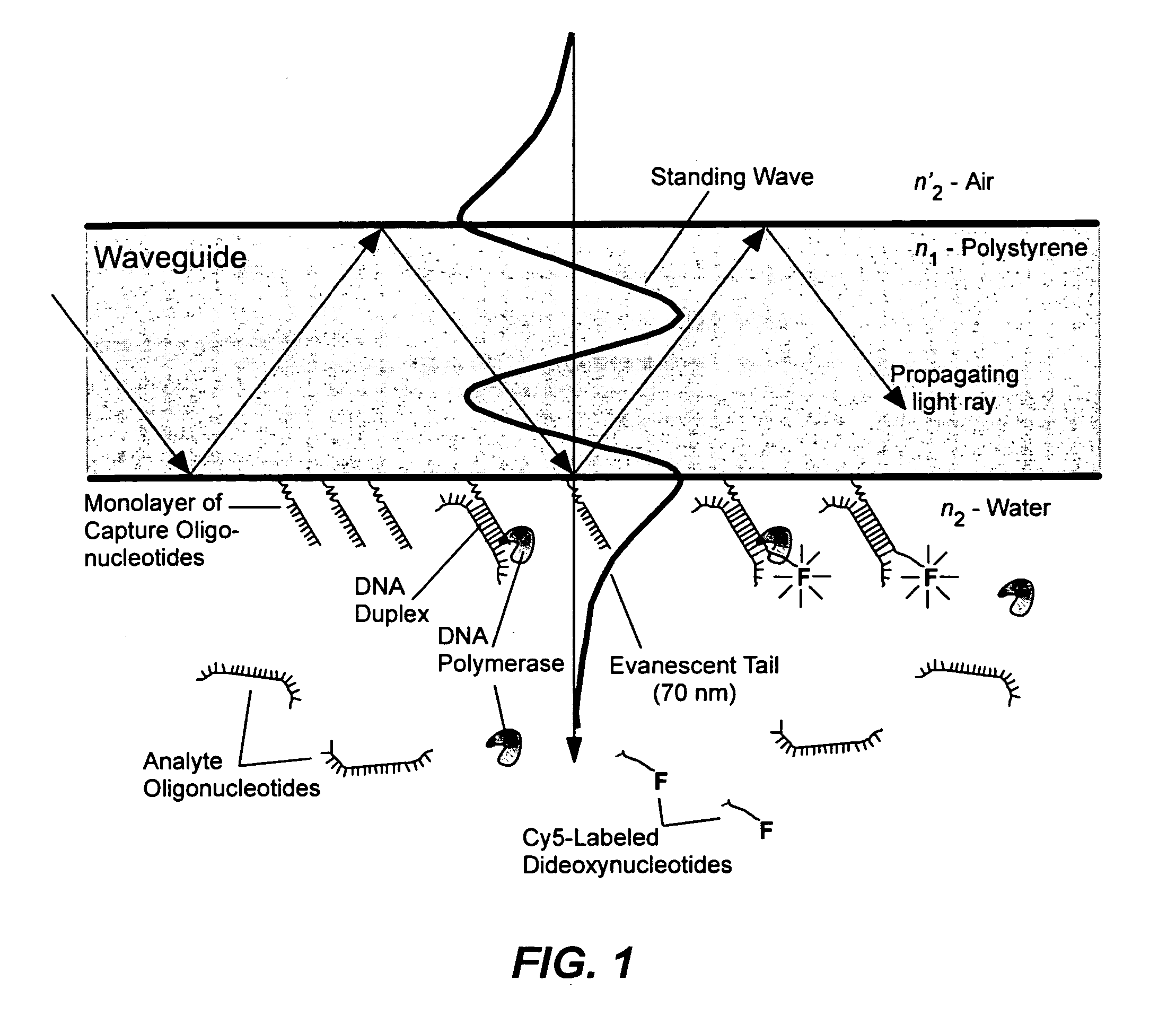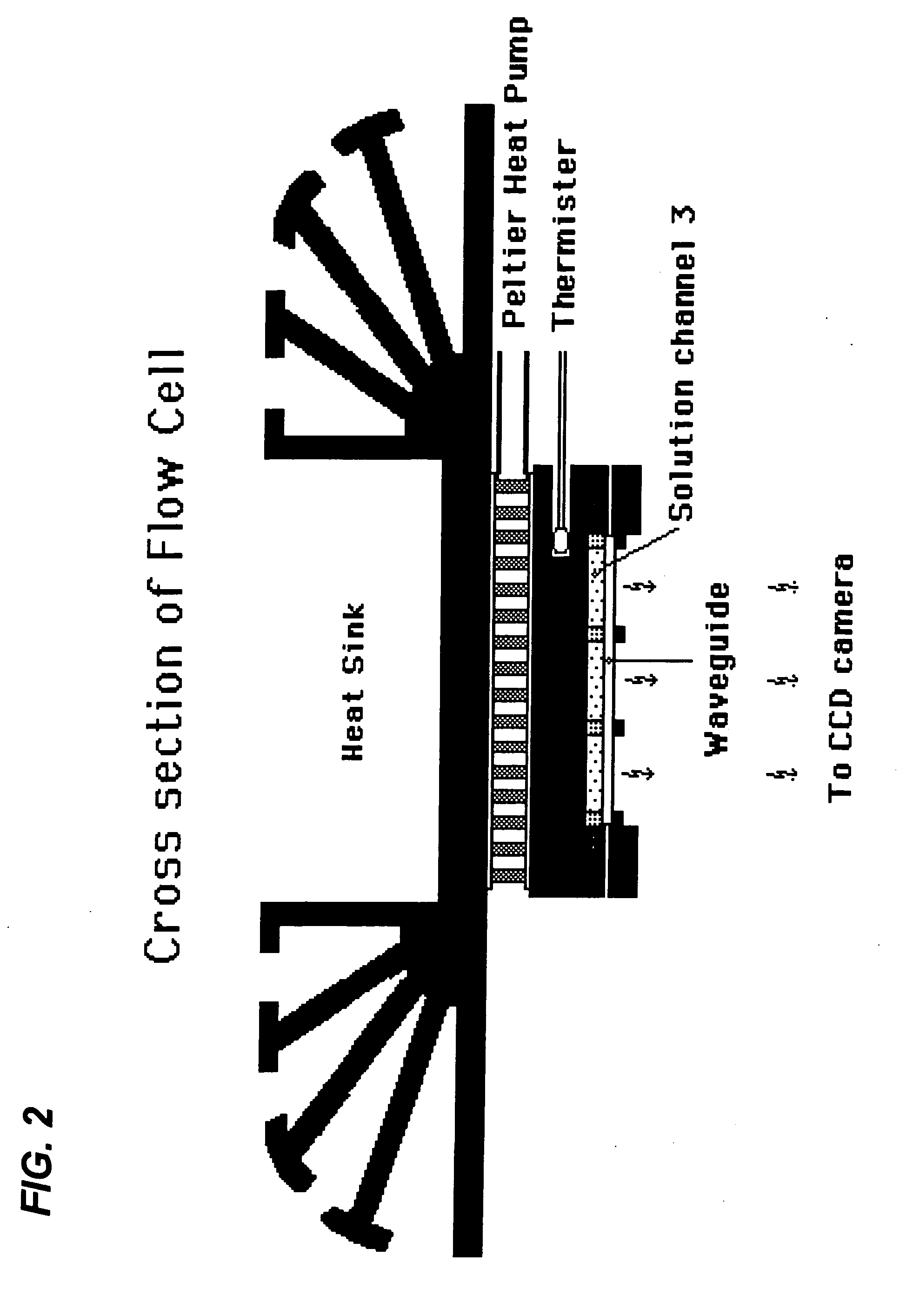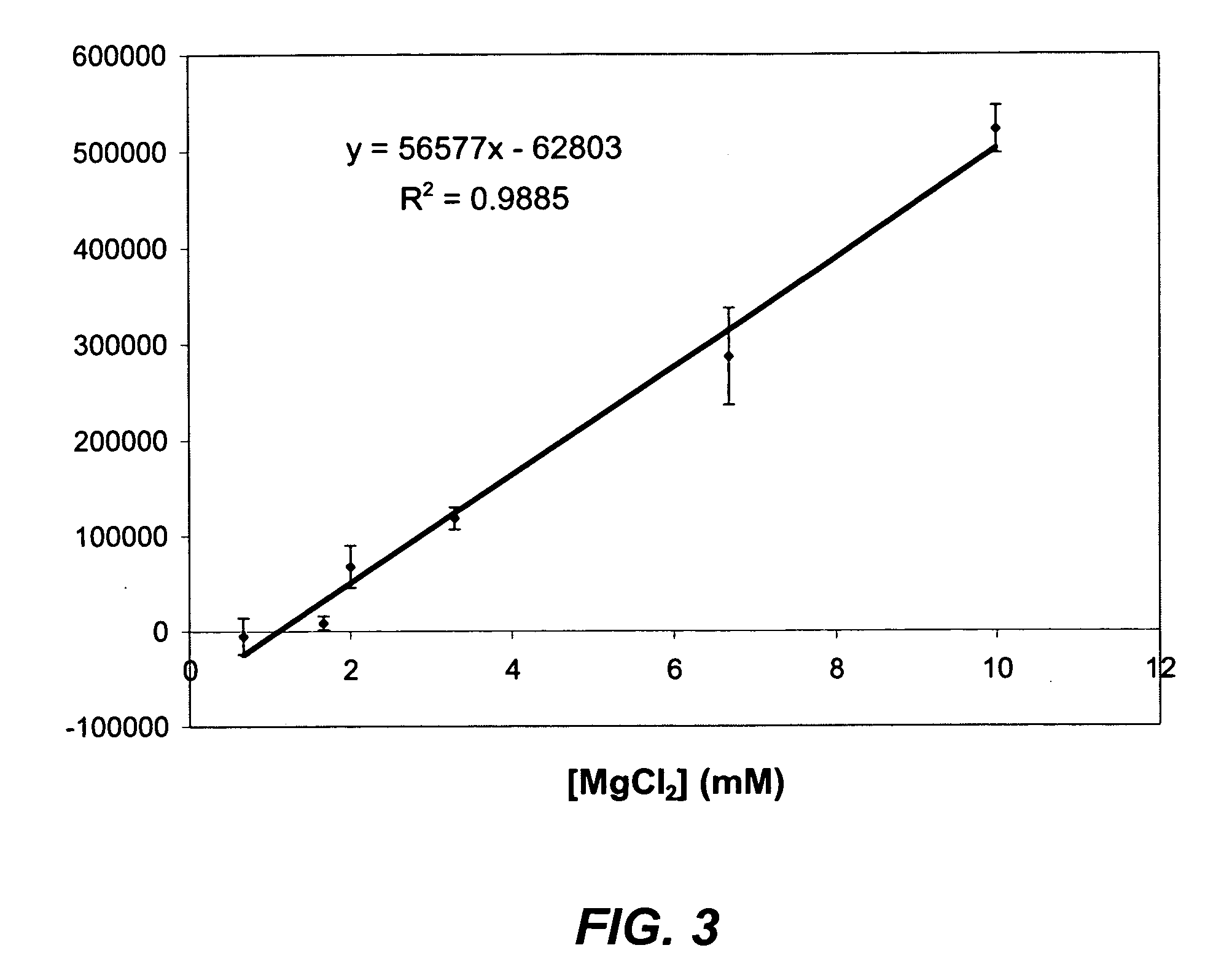Single base extension
a single base and reaction technology, applied in the field of biotechnology and diagnostics, can solve the problems of reducing the amount of reactants and the cost of each assay, and achieve the effect of excellent specificity of the reaction for the complementary bas
- Summary
- Abstract
- Description
- Claims
- Application Information
AI Technical Summary
Benefits of technology
Problems solved by technology
Method used
Image
Examples
Embodiment Construction
[0022] While this invention is described in certain embodiments and by way of certain examples, the present invention can be further modified within the spirit and scope of this disclosure. This application is therefore intended to cover any variations, uses, or adaptations of the invention using its general principles. Further, this application is intended to cover such departures from the present disclosure as come within known or customary practice in the art to which this invention pertains and which fall within the limits of the appended claims.
[0023] The assay system described herein combines single base extension (“SBEX”) with planar waveguide fluorescent biosensor technology to detect single nucleotide polymorphisms (SNP). Fifteen years ago, the Herron lab first investigated planar waveguides as fluorescent biosensors. See, e.g., Refs. 14-16. Since then, focus has been put on in vitro diagnostics (IVD) applications of this technology, particularly in critical care or point-...
PUM
| Property | Measurement | Unit |
|---|---|---|
| temperature | aaaaa | aaaaa |
| temperature | aaaaa | aaaaa |
| pH | aaaaa | aaaaa |
Abstract
Description
Claims
Application Information
 Login to View More
Login to View More - R&D
- Intellectual Property
- Life Sciences
- Materials
- Tech Scout
- Unparalleled Data Quality
- Higher Quality Content
- 60% Fewer Hallucinations
Browse by: Latest US Patents, China's latest patents, Technical Efficacy Thesaurus, Application Domain, Technology Topic, Popular Technical Reports.
© 2025 PatSnap. All rights reserved.Legal|Privacy policy|Modern Slavery Act Transparency Statement|Sitemap|About US| Contact US: help@patsnap.com



